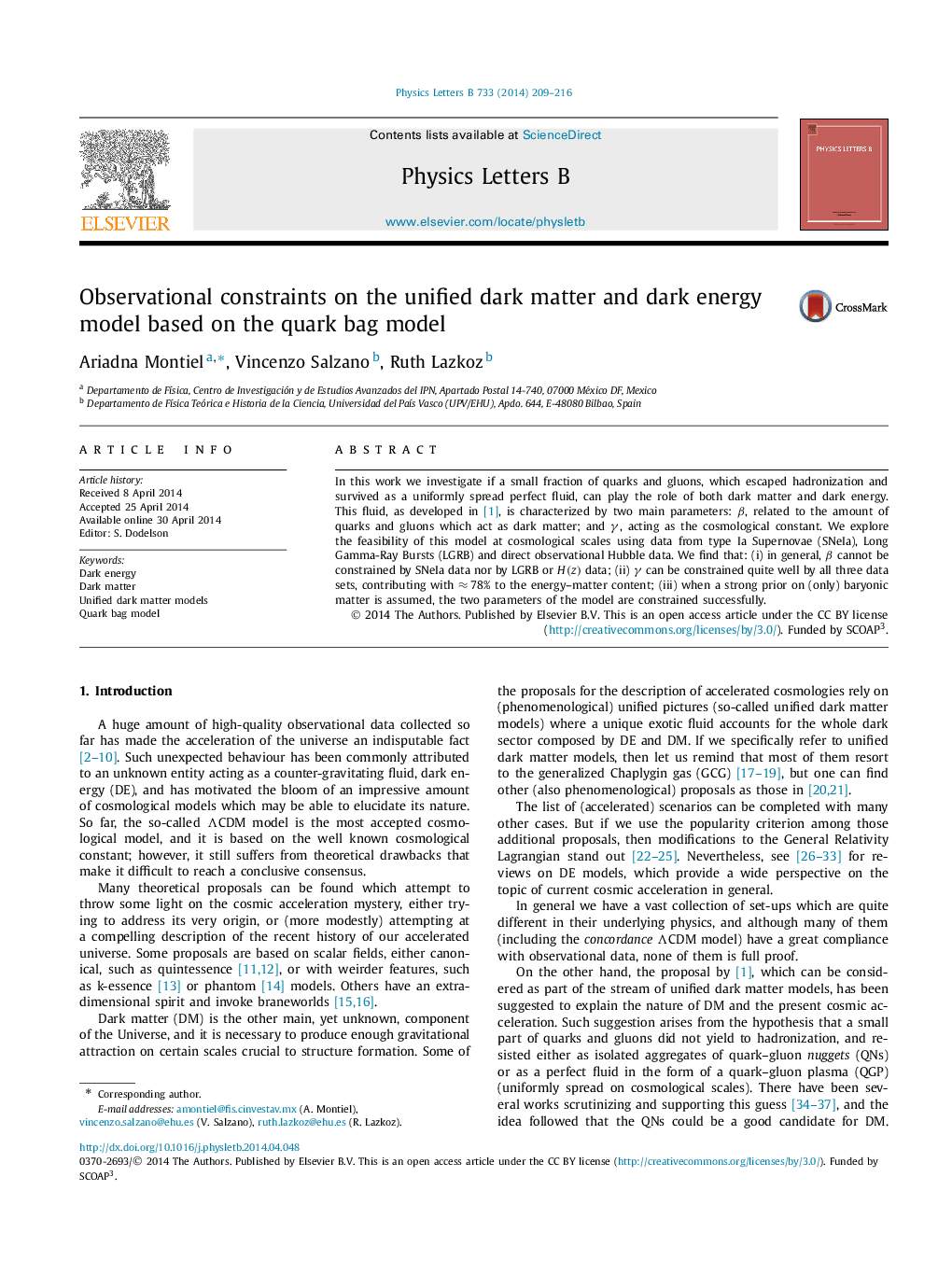| Article ID | Journal | Published Year | Pages | File Type |
|---|---|---|---|---|
| 1852987 | Physics Letters B | 2014 | 8 Pages |
In this work we investigate if a small fraction of quarks and gluons, which escaped hadronization and survived as a uniformly spread perfect fluid, can play the role of both dark matter and dark energy. This fluid, as developed in [1], is characterized by two main parameters: β, related to the amount of quarks and gluons which act as dark matter; and γ, acting as the cosmological constant. We explore the feasibility of this model at cosmological scales using data from type Ia Supernovae (SNeIa), Long Gamma-Ray Bursts (LGRB) and direct observational Hubble data. We find that: (i) in general, β cannot be constrained by SNeIa data nor by LGRB or H(z)H(z) data; (ii) γ can be constrained quite well by all three data sets, contributing with ≈78%≈78% to the energy–matter content; (iii) when a strong prior on (only) baryonic matter is assumed, the two parameters of the model are constrained successfully.
